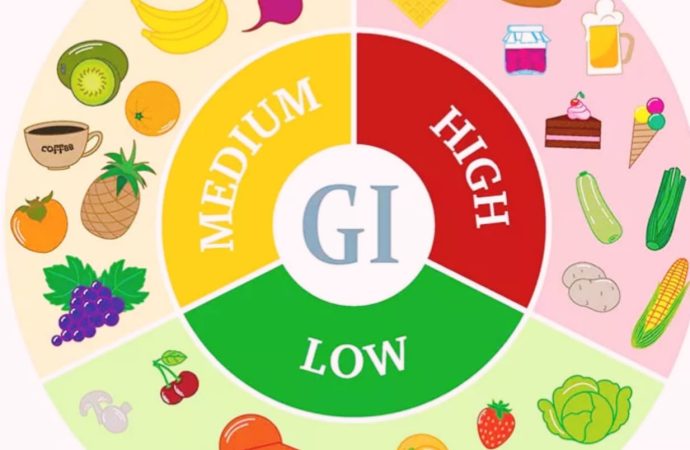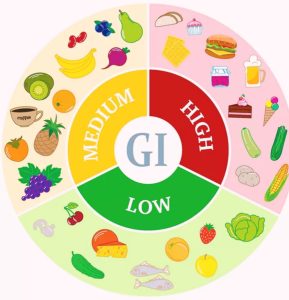Introduction Managing diabetes is a multifaceted endeavor, and a crucial aspect of this journey is carbohydrate counting. It’s not just about sugar; it’s about comprehensively monitoring all forms of carbohydrates, as they significantly impact blood sugar levels. In this article, we’ll explore the importance of carbohydrate counting in diabetes management and how it involves keeping
Introduction
Managing diabetes is a multifaceted endeavor, and a crucial aspect of this journey is carbohydrate counting. It’s not just about sugar; it’s about comprehensively monitoring all forms of carbohydrates, as they significantly impact blood sugar levels. In this article, we’ll explore the importance of carbohydrate counting in diabetes management and how it involves keeping a close watch on sugar intake from various sources.
The Carbohydrate Conundrum
Carbohydrates are the body’s primary source of energy, but for individuals with diabetes, they can be a double-edged sword. On one hand, carbohydrates are essential for energy, but on the other, they have a direct impact on blood sugar levels. It’s the reason why carbohydrate counting is a cornerstone of diabetes management.
Carbohydrate Categories
Carbohydrates are not just sugars; they encompass a wide range of compounds, including:
- Simple Sugars: These are the sugars found naturally in foods like fruits (fructose) and dairy (lactose) or added sugars in processed foods (sucrose, high fructose corn syrup).
- Complex Carbohydrates: These are starches found in foods like grains, legumes, and starchy vegetables.
- Fiber: While fiber is a carbohydrate, it has minimal impact on blood sugar and is considered beneficial for individuals with diabetes.
https://blog.drnikhilprabhu.com/wp-content/uploads/2020/10/Glycemic_index_drnikhilprabhu.com_.jpeg
The Role of Carbohydrate Counting
Carbohydrate counting involves estimating the number of grams of carbohydrates in the foods you eat and matching them with the appropriate dose of insulin or other diabetes medications. It allows individuals with diabetes to predict the effect of different foods on their blood sugar levels and make informed choices.
Sugar’s Place in Carbohydrate Counting
While sugar is an important component of carbohydrate counting, it’s just one piece of the puzzle. It’s essential to consider all sources of carbohydrates, including starches and fibers, as they also affect blood sugar levels.
The Glycemic Index (GI)
The glycemic index measures how quickly carbohydrates in foods raise blood sugar levels. Foods with a high GI cause a rapid spike in blood sugar, while those with a low GI have a slower, more gradual impact. Carbohydrate counting takes the GI of foods into account, helping individuals make choices that minimize blood sugar fluctuations.
Balancing Carbohydrates
Balancing carbohydrates means spreading them throughout the day to help maintain stable blood sugar levels. This involves consuming a consistent amount of carbohydrates at each meal and snack.
Carbohydrate Counting in Practice
Here’s a practical example of carbohydrate counting:
- Breakfast: A serving of oatmeal (complex carbohydrates), with a side of fresh berries (sugar from fructose). Total carbohydrates counted for this meal: both the oatmeal and berries.
- Lunch: A whole-grain sandwich (complex carbohydrates) with lean protein and vegetables. Total carbohydrates counted for this meal: primarily the bread, plus any added sugars in condiments.
- Snack: A piece of whole fruit (complex carbohydrates). Total carbohydrates counted for this snack: all carbohydrates from the fruit.
- Dinner: Grilled chicken breast (minimal carbohydrates), quinoa (complex carbohydrates), and steamed vegetables (fiber). Total carbohydrates counted for this meal: primarily the quinoa.
- Snack: Greek yogurt (complex carbohydrates), with a sprinkle of cinnamon (minimal carbohydrates). Total carbohydrates counted for this snack: yogurt plus the minimal carbohydrates in cinnamon.
https://mamiverse.com/wp-content/uploads/2015/08/Sweet-Truth-The-Low-Glycemic-Sugar-Alternatives-Update-MainPhoto.jpg
Conclusion
Carbohydrate counting is a fundamental skill for individuals with diabetes, and it encompasses more than just monitoring sugar intake. It involves keeping a watchful eye on all forms of carbohydrates, including sugars, complex carbohydrates, and fiber. By mastering carbohydrate counting, individuals with diabetes can better predict the impact of foods on their blood sugar levels and make informed choices for effective diabetes management. Consulting with healthcare professionals, particularly registered dietitians and endocrinologists, can provide personalized guidance in this crucial aspect of diabetes care. Remember, it’s not just about sugar; it’s about understanding and managing all carbohydrates for optimal blood sugar control.



















Leave a Comment
Your email address will not be published. Required fields are marked with *